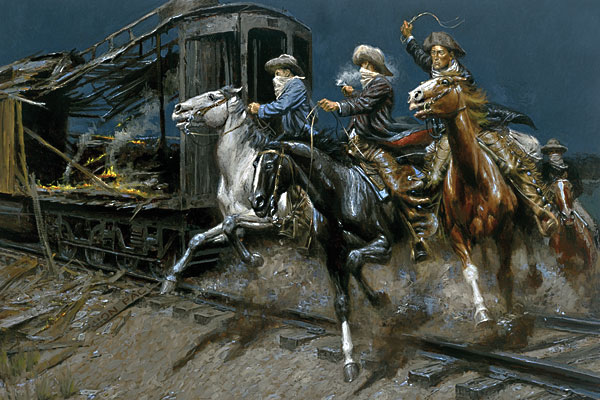 What most don’t know about Doc Holliday is that he didn’t go west for his health. Some report he left Georgia because of a wandering spirit, or, as Bat Masterson wrote in Human Life magazine, because of a quick trigger finger.
What most don’t know about Doc Holliday is that he didn’t go west for his health. Some report he left Georgia because of a wandering spirit, or, as Bat Masterson wrote in Human Life magazine, because of a quick trigger finger.
If he were seeking a health resort, Georgia was full of them, and famous for a few. So something else must have sent him west. Bat’s story seems most likely to me.
My craziest research memory is being dropped off at the end of a dark gravel road, at nighttime, by a trolley driver who insisted that I had to see the “Vapor Caves.” Turned out the Vapor Caves were the reason Doc went to Glenwood Springs, Colorado. Funny thing is, the trolley driver didn’t know I was writing a book about Doc.
The biggest misconception about Doc is that he was Wyatt Earp’s lifelong friend; truth is, they only spent a few years together. Bat Masterson may have been Doc’s truer friend, since he helped Doc out of his dire legal troubles in Denver, while Wyatt was hiding out in the mountains of the Gunnison.
The South’s influence on Doc is seen in how he stayed loyal to his friends, against all odds. That sort of family kinship is a hallmark of Southern honor, and the Earps became Doc’s family when he was far from home.
On a chilly, rainy day in Griffin, Georgia, I stood at the cemetery where local historians believe Doc was moved (see photo) after his initial burial in Glenwood Springs, Colorado. An elderly man called me on my cellphone, saying he had found my number through the Holliday House. He asked, “Do you think Doc Holliday is buried in Griffin?” I laughed and replied, “I do now!” Could have been a coincidence, but didn’t feel like it.
Gone with the Wind’s connection to Doc is a complicated bit of family history. Doc’s cousin and rumored sweetheart Mattie Holliday was also cousin to Margaret Mitchell, who wrote the book. It’s Mattie whom a dying Doc remembers in the movie Tombstone when he tells Wyatt: “I was in love once. My first cousin….She was all I ever wanted.”
Doc’s dexterity with cards is typical of all the dentists I have known—they all do something crafty with their hands when they’re not doing dentistry. My dentist husband spends part of our summer vacation at the beach carving intricate sand castles, a bigger version of the carving he does in the office.
The most knowledgeable Doc historian is Dr. Gary Roberts, author of Doc Holliday: The Life and Legend. We were writing our books at the same time. Some of his book ended up in mine; some of mine ended up in his.
I followed a paper trail in Dallas and learned that, contrary to all the old biographies, Doc’s shooting affray with Charlie Austin was not laughed at or proof he was a bad shot. In fact, both were arrested, and Doc was tried on a charge of attempted murder. He was acquitted, then ran up a string of gambling charges. The man who emerged from my research wasn’t a killer, but an addicted gambler, throwing away his job and respectability over games of chance.
I was bemoaning the difficulty of trying to find the facts about people who hadn’t wanted their lives examined, when my mother said, “Then you’d never learn how to write a novel.” She inspired me to weave the history into a fictional narrative.
Keeping history alive in historical fiction means forgetting that you know what’s going to happen. Your characters haven’t a clue, so you have to write as if you’re clueless too. Readers tell me that they are surprised when they realize what’s happening because they never saw it coming, even though they knew it was.
VICTORIA WILCOX, AUTHOR
Thanks to her father, who wanted to see the historic sites in Georgia’s Fayette County, Victoria Wilcox discovered a home built circa 1855 by the uncle of the famous Doc Holliday who played there as a child. Gossip that the home was to be torn down for a parking lot roused Wilcox to form a group to save the home and turn it into a museum of Fayette County history. The museum work led to her researching the life of Holliday, which inspired her to write her trilogy, Southern Son. The second book, Gone West, is out this May.






